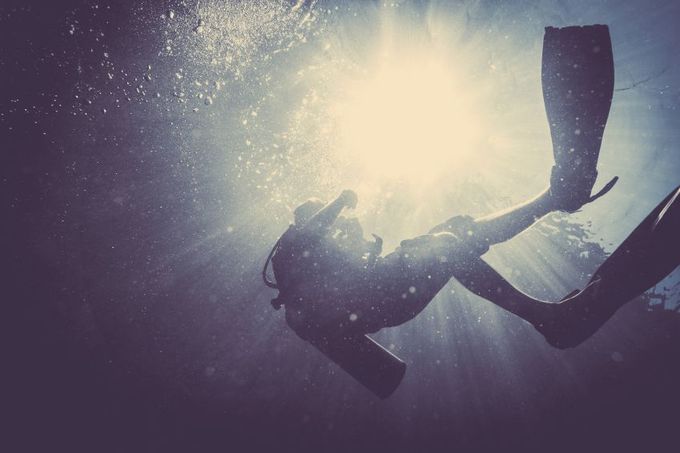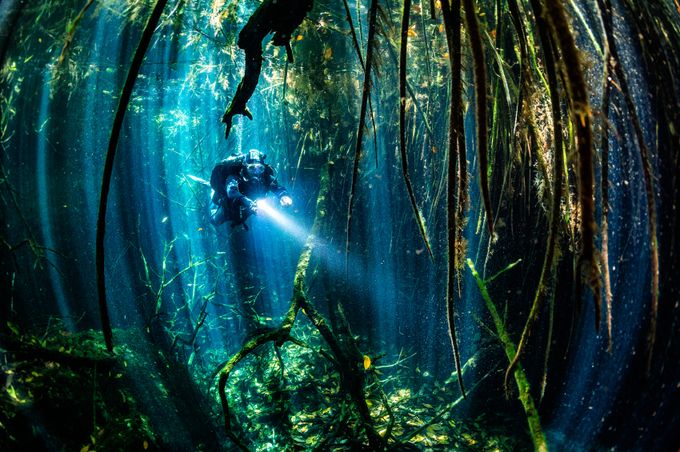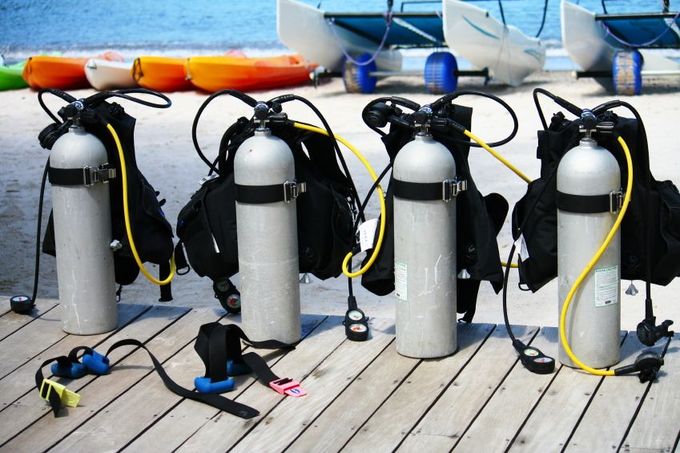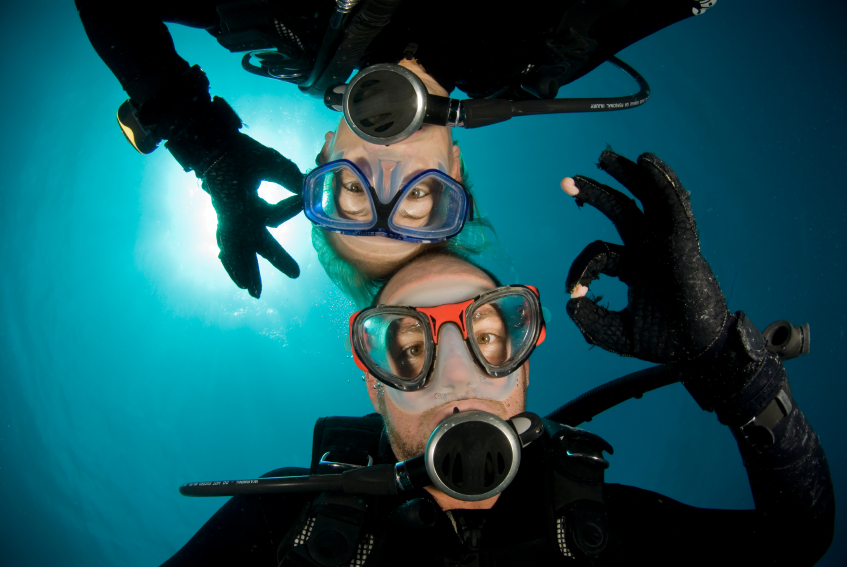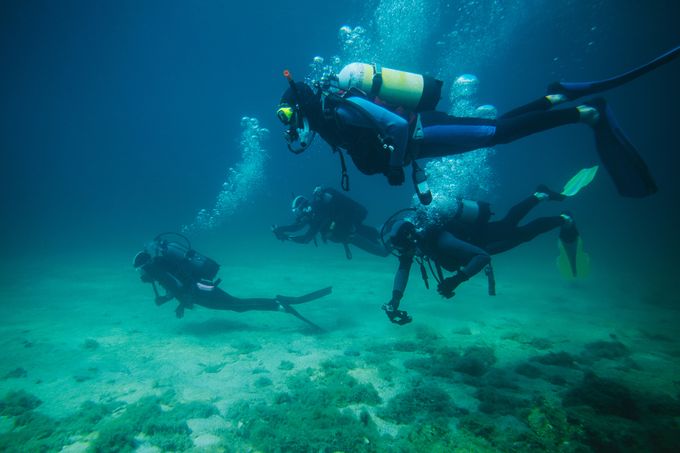Scuba Diving Equipment

There are lots of different types of scuba diving apparatus available for dives and the type you’re on will decide the type of equipment needed.
The most important things that your equipment needs to secure are your safety, breathing, vision and mobility and the equipment required can be separated into these different sections.
Breathing
As the name suggests, the most important piece of equipment in scuba diving is the scuba, a personal breathing apparatus based around a regulator, that divers carry with them on dives. Regulators are usually sold in three parts; The 1st Stage and Primary together, an Alternate Air Source & a Submersible Pressure Gauge.
The two methods of breathing are open circuit, wherein the diver does not reuse any of the air they breathe, and a rebreather, which reuses each exhaled breath by removing the carbon dioxide and replacing the oxygen used by the diver.
Most scuba diving is done using a half mask which covers the diver’s eyes and nose, and a mouthpiece to supply the breathing gas from the scuba. Technical divers however, often use a full face mask, which covers the eyes, nose and mouth, meaning all breathing must be done through the nose.
Mobility
In order to dive safely, a diver must have total mobility and control. The most common method divers use to propel themselves underwater is through fins. Paddle shaped fins are the oldest and still the most widely used type of fins, however many divers have their own taste in fins, and wear split fins, free diving fins, open heel fins and full foot fins, depending on their need.
Buoyancy control is also a large factor contributing to mobility and divers utilise buoyancy compensators, diving weighting systems, and diver trims to control their own buoyancy throughout a dive.
Vision
Anyone who has ever been snorkeling will know the pain and annoyance that is getting your vision impaired through getting water in your equipment.
Diving masks and helmets not only provide an air space in front of the eyes, they also correct the refraction error created by the water as the light travels from water to air through a flat lens.
All diving below a certain depth is carried out with a diving light also connected to the mask and goggles.
Protection
The main source of protection for scuba divers is their wetsuit. Wearing a suit protects from many environmental factors, such as changing temperatures, abrasions and stings.
Different dives require different thickness of suit, with many technical deep divers wearing dry suits, to protect from the low temperature, further under the surface.
For added protection, many divers carry accessories and safety equipment such as video equipment and knives to cut themselves free in emergencies.
Navigation
It is of the up most importance that a diver knows his location and depth at all times during a dive. To ensure this, most divers will carry a navigation device on them, as well as a communication device, to stay in contact with other divers and those on the surface.
